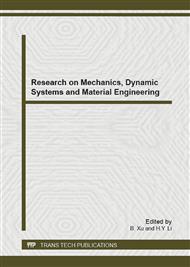p.235
p.239
p.243
p.247
p.251
p.255
p.259
p.263
p.269
Ni Doped LiMn2O4 Prepared by a Flameless Combustion Synthesis
Abstract:
In this paper, LiNixMn2−xO4 materials were prepared by solution combustion synthesis method using acetic salts as raw materials and acetic acid as fuel. The phase structures are characterized by X-ray diffraction (XRD). Electrochemical performances of the materials are investigated by galvanostatic charge/discharge methods. XRD results revealed that the main phase of the products with increasing Ni3+ content is LiMn2O4, and there is a trace amount of Mn3O4 found in the product with Ni3+ content of 0.05. Electrochemical experiments showed that the capacity and the cyclability of the LiNixMn2−xO4 materials decrease with increasing Ni3+ content. Ni3+ doping has no significantly improvement for the capacity and the cyclability of the LiMn2O4 spinel.
Info:
Periodical:
Pages:
251-254
Citation:
Online since:
December 2012
Authors:
Price:
Сopyright:
© 2013 Trans Tech Publications Ltd. All Rights Reserved
Share:
Citation:


